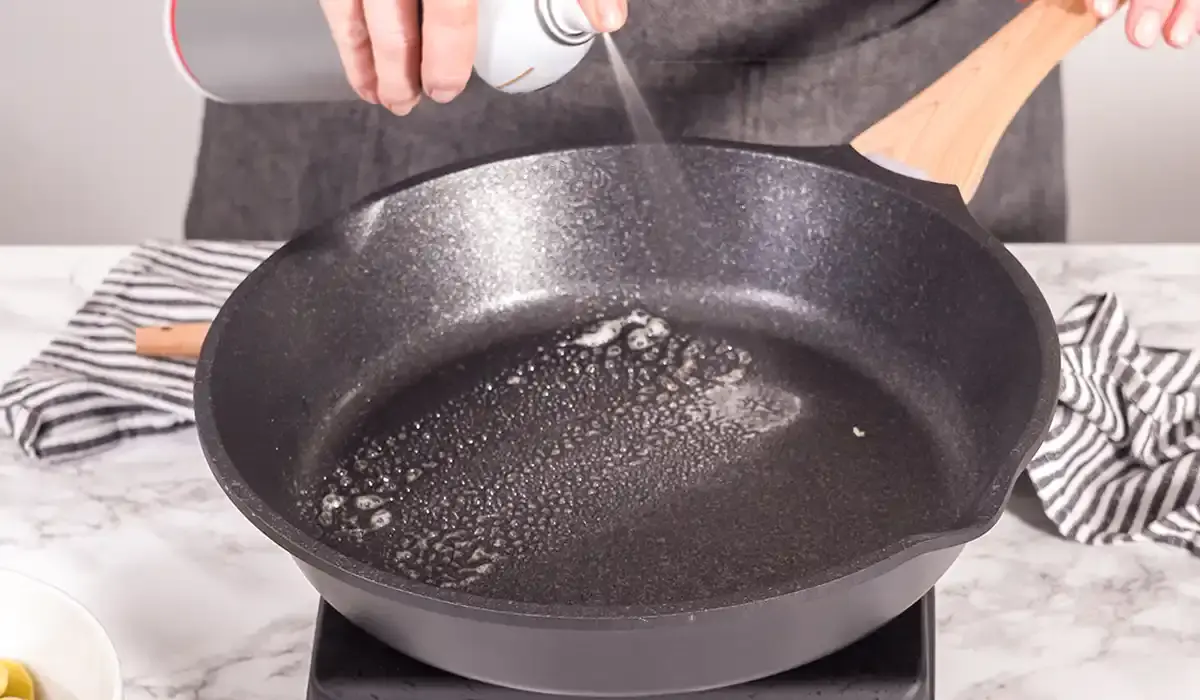Kitchen
Cooking Spray Could Damage Your Nonstick Pans — Try These Alternatives

Nonstick Pan Spray Alternatives: Better Options for Cooking Without Damage
Many home cooks love their nonstick skillets for easy cleanup and quick meals. However, using traditional cooking sprays can cause problems. Even though sprays seem convenient, they often damage the nonstick coating and impact the flavor of food. By exploring safer Nonstick Pan Spray Alternatives, you can preserve your cookware and enjoy healthier cooking results.
You might also enjoy the articles on our other site: Maybelline Becomes WWE’s First Official Cosmetics Partner
Why Nonstick Spray Can Harm Your Cookware
Nonstick cooking sprays contain more than just oil. They include additives like soy lecithin that can create a sticky residue over time. This buildup becomes extremely difficult to remove and can damage the pan’s surface, making food stick more during cooking.
Additionally, many sprays have low smoke points, meaning they burn easily under high heat. This burning creates a polymerized layer that bonds to the coating, which is nearly impossible to remove without harming the surface.
Ingredients in Cooking Sprays You Should Know
Most sprays list oil as the main ingredient, often combined with lecithin, dimethyl silicone, and propellant gases like propane or nitrous oxide. While considered safe for consumption, these additives are not ideal for your nonstick cookware. Over time, they shorten the lifespan of your pans and alter their performance.
Can You Still Use Cooking Spray on Nonstick Pans?
Experts strongly advise against it. When heated at high temperatures, spray residues burn and form a stubborn layer that damages the coating. This not only shortens your pan’s life but also introduces unpleasant bitter flavors into your meals.
Nonstick Pan Spray Alternatives for Healthier Cooking
Use an Oil Mister
Switching to an oil mister allows you to lightly coat the pan without excess oil or harmful additives. Fill it with olive oil, avocado oil, or another high-smoke-point oil for versatile cooking.
Cook with Natural Fats
Butter, ghee, duck fat, and coconut oil all provide natural nonstick qualities while adding flavor. These options also work well for sautéing and frying.
Prepare Pans with Oil and Flour for Baking
For baked goods like cakes or Dutch babies, coat pans with a light layer of butter or oil followed by flour. This creates a reliable nonstick surface without chemical sprays.
How to Fix Pans Damaged by Cooking Spray
If you have used spray on your nonstick pan, you may still restore it with careful cleaning and seasoning.
Clean Gently and Thoroughly
Wash the pan with warm, soapy water and a soft sponge. Avoid abrasive tools that can scratch the coating further.
Remove Residue with Baking Soda Paste
Mix baking soda with water to form a paste. Apply it to sticky areas and let it sit before scrubbing gently.
Re-season the Pan for Better Performance
Apply a thin coat of high-smoke-point oil to the cooking surface. Heat gently, then cool and wipe away excess oil.
If the nonstick coating shows severe damage, replacing the pan might be the most practical option.
When Cooking Spray Is Acceptable
Cooking spray works best on baking dishes or cake pans where an even, light coating is required. However, it is still important to wash the pan thoroughly after use to prevent buildup. Whenever possible, choose one of the Nonstick Pan Spray Alternatives mentioned above for longer-lasting cookware.
Final Thoughts
Choosing the right alternative to cooking spray can extend the life of your nonstick pans and improve your cooking results. Whether you use natural fats, oil misters, or traditional seasoning methods, your cookware will stay in better condition for years.
You might also enjoy the articles on our other site: Helping Your Child Handle Their First Crush
For more helpful kitchen tips and product advice, explore more news on this website.
